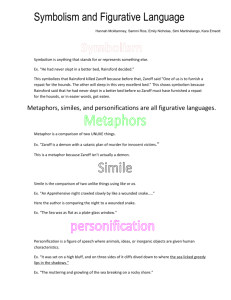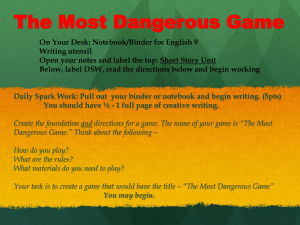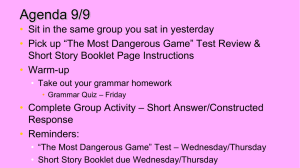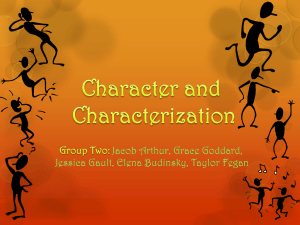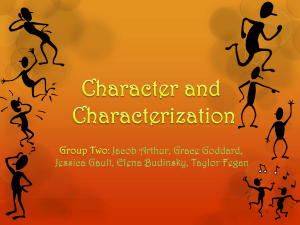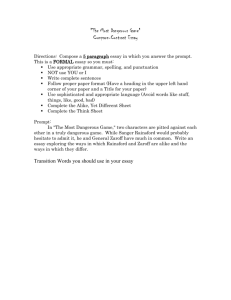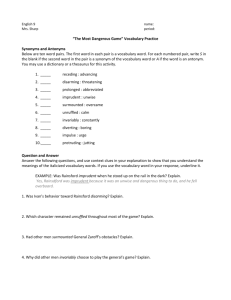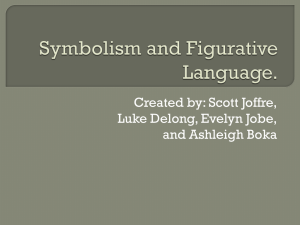The Most Dangerous Game Literary Journal Four
advertisement
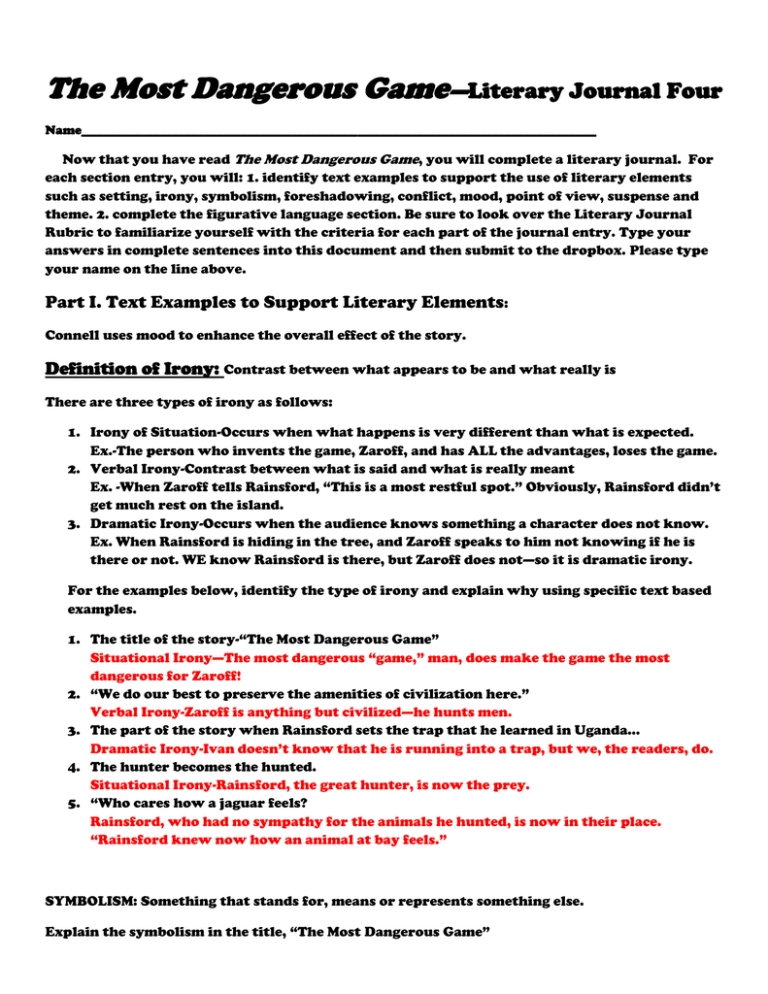
The Most Dangerous Game—Literary Journal Four Name__________________________________________________________________________________ Now that you have read The Most Dangerous Game, you will complete a literary journal. For each section entry, you will: 1. identify text examples to support the use of literary elements such as setting, irony, symbolism, foreshadowing, conflict, mood, point of view, suspense and theme. 2. complete the figurative language section. Be sure to look over the Literary Journal Rubric to familiarize yourself with the criteria for each part of the journal entry. Type your answers in complete sentences into this document and then submit to the dropbox. Please type your name on the line above. Part I. Text Examples to Support Literary Elements: Connell uses mood to enhance the overall effect of the story. Definition of Irony: Contrast between what appears to be and what really is There are three types of irony as follows: 1. Irony of Situation-Occurs when what happens is very different than what is expected. Ex.-The person who invents the game, Zaroff, and has ALL the advantages, loses the game. 2. Verbal Irony-Contrast between what is said and what is really meant Ex. -When Zaroff tells Rainsford, “This is a most restful spot.” Obviously, Rainsford didn’t get much rest on the island. 3. Dramatic Irony-Occurs when the audience knows something a character does not know. Ex. When Rainsford is hiding in the tree, and Zaroff speaks to him not knowing if he is there or not. WE know Rainsford is there, but Zaroff does not—so it is dramatic irony. For the examples below, identify the type of irony and explain why using specific text based examples. 1. The title of the story-“The Most Dangerous Game” Situational Irony—The most dangerous “game,” man, does make the game the most dangerous for Zaroff! 2. “We do our best to preserve the amenities of civilization here.” Verbal Irony-Zaroff is anything but civilized—he hunts men. 3. The part of the story when Rainsford sets the trap that he learned in Uganda… Dramatic Irony-Ivan doesn’t know that he is running into a trap, but we, the readers, do. 4. The hunter becomes the hunted. Situational Irony-Rainsford, the great hunter, is now the prey. 5. “Who cares how a jaguar feels? Rainsford, who had no sympathy for the animals he hunted, is now in their place. “Rainsford knew now how an animal at bay feels.” SYMBOLISM: Something that stands for, means or represents something else. Explain the symbolism in the title, “The Most Dangerous Game” Part II. Figurative Language in The Most Dangerous Game Identify the type of figurative language in the following examples from the story. Examples will include metaphors, similes, and personification. Some examples will contain both a metaphor or simile AND personification. Then, label the parts of the figurative language in this manner: a. Metaphor and Simile—Identify the two unlike things being compared b. Personification- Identify the words or phrases that give a non-human thing human traits Type in your answers below the examples: 1. “’You’ll find this game worth playing…Your strength and stamina against mine…Outdoor chess’!” Outdoor Chess & the game-Metaphor 2. “An apprehensive night crawled slowly by like a wounded snake…” Night & a wounded snake-Simile 3. “The Cossack was the cat; he was the mouse.” Zaroff & a cat, Rainsford & a mouse-Metaphor
